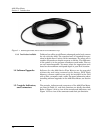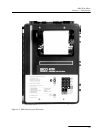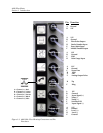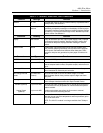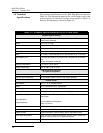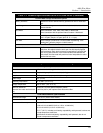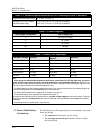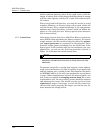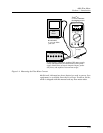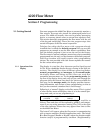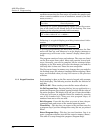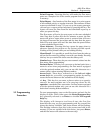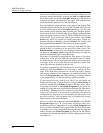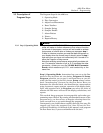
4220 Flow Meter
Section 1 Introduction
1-12
nickel-cadmium batteries show fairly rapid rates of self-dis-
charge. A battery that is fully charged and then placed in storage
will lose some capacity each day. In a week, this could easily be
5% or more.
When using lead-acid batteries, you must be careful to avoid
complete discharge, as this may cause cell reversal, which will
ruin the battery. Also, complete discharge in low temperature
ambients may cause the battery to freeze, which can deform the
plates or even crack the case. Always operate these batteries
with a reserve factor!
1.7.1 Current Draw Calculating current draw for a 4220 Flow Meter is somewhat
more difficult than calculating the battery capacity. You cannot
simply measure the idle current of the unit unless the printer
and report generator are turned off in the program. These
functions require power periodically, but not all the time. If the
figures given in the previous table are not satisfactory for your
application, you can use the following procedure (shown in
Figure 1-4) to measure the actual current draw.
Note
Do not attempt this procedure unless you have the proper
equipment available and know how to make electrical mea-
surements.
To measure current for a varying load requires a more-sophisti-
cated type of multimeter, one that is capable of averaging high
and low readings over a period of time. You should set the meter
on MIN/MAX and let it run with your program for several hours
or more. Other manufacturers’ meters are also acceptable, but
only if they are capable of averaging current draw. For a more
representative test, the area-velocity sensor should be attached
and submerged in water. You should run the test for at least
eight hours, longer if necessary, or until the flow meter has
exercised the entire program. The longer you run the test, the
more accurate the average will be.



